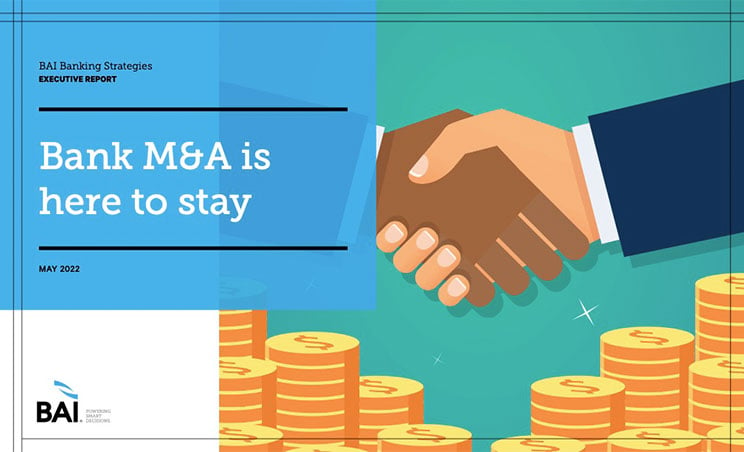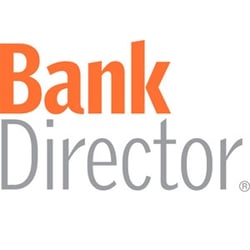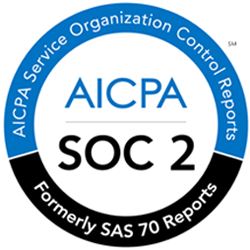The banking world is evolving with respect to what employees value and expect from their work environment.
Anyone who’s been in banking for a while has been exposed to the ever-evolving “softer side” of the industry: change management programs, coaching, talent development workshops, team personality assessments, communication skills development … you get the point.
It seems every few years a new developmental need is either identified or created to allow a holistic solution to be introduced into our organizations. Many of these are worthwhile endeavors—especially those focused on diversity, equity and inclusion—and can improve your organization, your people and your bottom line. But too many of them are shelved before the dust settles on the manuals you take away from the exercise.
It’s also impossible to ignore the endless array of technology- and process-driven initiatives affecting our institutions: process improvement efficiencies, decisions about which fintechs to engage and how, business intelligence solutions, fraud management, what applications to move to the cloud, not to mention the current ultracompetitive race to attract technical talent. I empathize with bank technology leaders who must assess, build, maintain, deliver and evolve their teams and technical and operational environments every day.
So what do people and process have to do with delivering a successful M&A program?
Just about everything, because the payback of your investment categories is truly tested in M&A. After all, aren’t mergers really about successfully aligning people and processes between two organizations to create a better single entity?
From my two decades of M&A experience, I can tell when a bank’s leadership is truly committed to doing everything it can to make a combination successful. This commitment demonstrates leaders’ desire not just to survive but to evolve their institution to compete, grow through engaged colleagues and efficient processes, and win the battle for highly satisfied customers. These leaders can connect the past with the future.
Based on conversations with committed leaders, here are three ways to expand your effectiveness in the next M&A deal.

1. Add culture to your definition of due diligence
We know about the importance of credit file reviews and analysis and risk assessments performed on the loan portfolio as part of the due diligence process. However, we live in an evolving world with respect to what employees value and expect from their work environment.
An increasingly important addition to traditional due diligence efforts is an honest dive into cultural alignment. While cultural differences between institutions may not break a deal, not understanding what your institution is getting into is a key risk factor for M&A success.
An on-point example involves one of our clients doing an acquisition. The client had taken a rigid position requiring return to the office after the worst of the pandemic, but prior to signing the deal, they didn’t bother to explore the subject with employees of the acquired company, which had a different outlook on remote and hybrid working situations. The merger of people didn’t go as smoothly as it could have, and our client regretted afterward that the company had missed an early opportunity to be more inclusive with new members of its team.

2. Deepen insights into new markets and customers
While you aren’t likely to perform deep-dive market and customer profiles during due diligence, you should still have a detailed plan for when you are able to dig in.
All too often, we hear the canned response, “Our customers and our markets are similar, so this is a great fit.” OK, but is this conclusion based on CEO-to-CEO conversations and intuition or on hard data points? Unless it is the latter, many will understandably remain skeptical of such definitive statements. In fact, Gallup data indicates that up to 90% of M&As fail to live up to the promises used to support a merger. Based on this, a cautious perspective may be warranted.
“Relationship banking” has changed, and while elements such as building trust and personal connections remain important, digital channels have flipped the script. There is far more available information about customers’ financial needs, behaviors and drivers than any one person can digest.
Focus on getting to the data that quantitatively supports an understanding of what your new customers want and are doing with their banking relationship (saving, investing, spending on subscriptions, etc.), with whom they are banking (yes, all providers), and how they are banking (actively or passively). Once they become your customers, it is far too late to figure this out.

3. Turn your merger into a talent opportunity
Finally, the natural tendency is to use the same “go-to” teams for any key initiative. But some innovative bankers look at M&A as an opportunity to pair younger, talented staff with those who have led key initiatives in the past.
Some people like being thrown into the deep end and can bring fresh perspectives, including how to onboard your new customers. Would you look to baby boomer staff to lead strategy when you’ve just bought a bank that primarily targets millennials and Gen Z? A reluctance to move out of the comfort zone and embrace the unknown will result in missed opportunities, which in M&A always leads to less than optimal results.
So, here’s to seeing banking leaders change the “we have always done it this way” approach to structuring your M&A activities from due diligence to onboarding.
These three suggestions are just a start. You will always know your institution better than anyone else. The real proof is whether you and your teams are willing to expand your efforts during the M&A process, even if only to revisit the change management, process improvement or business intelligence investments you made in the past. You may get a positive ROI out of them after all.
Bank Merger Marketing is a BKM Marketing speciality practice that helps acquirers maximize the value of merger transactions by providing expertise, guidance, and customized new customer onboarding communications.
This article was originally featured in BAI Banking Strategies Executive Report, "Bank M&A is here to stay", emphasizing the importance of communication, cultural integration, and effective leadership in ensuring a successful merger. Jump to page 11 in BAI's Executive Report to explore the challenges and opportunities that arise during bank mergers from a seasoned expert with Bank Merger Marketing.
















